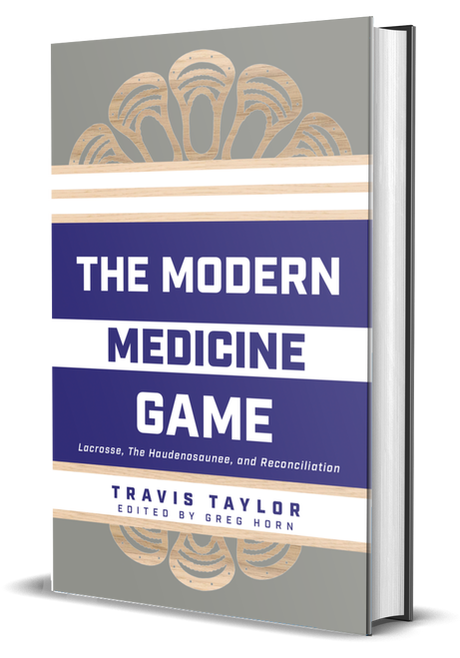|
In 2010, members of the Haudenosaunee Nationals (formerly the Iroquois Nationals) lacrosse team, representing the Haudenosaunee Confederacy of six Indigenous Nations in North America, were sitting in a hotel in New York City instead of playing on the field in Manchester, England, competing for a world championship. The Nationals were told they couldn’t use their Haudenosaunee passports to travel to the UK; only Canadian or American passports would be accepted, effectively denying that this Confederacy had sovereignty and reinforcing the authority of the colonial powers. Media coverage of this pivotal event sparked the curiosity of longtime international lacrosse coach and player Travis Taylor. He wanted to learn more about the intersection of the sport and the traditional beliefs of the Indigenous people who originally developed the sport—or as they call it Tewa’á:raton.
|
Originally written as Taylor’s PhD thesis, The Modern Medicine Game: Lacrosse, the Haudenosaunee, and Reconciliation postulates how lacrosse is a “modern medicine game,” and is a crucial element of reconciliation, decolonization, and resilience for the Haudenosaunee peoples. It explores what led the Haudenosaunee Nationals to assert their self-determination in 2010 by reaching back into time to understand the origins of the sport as a gift from the Creator, and its adoption and evolution by English-speaking people, most notably William George Beers.

